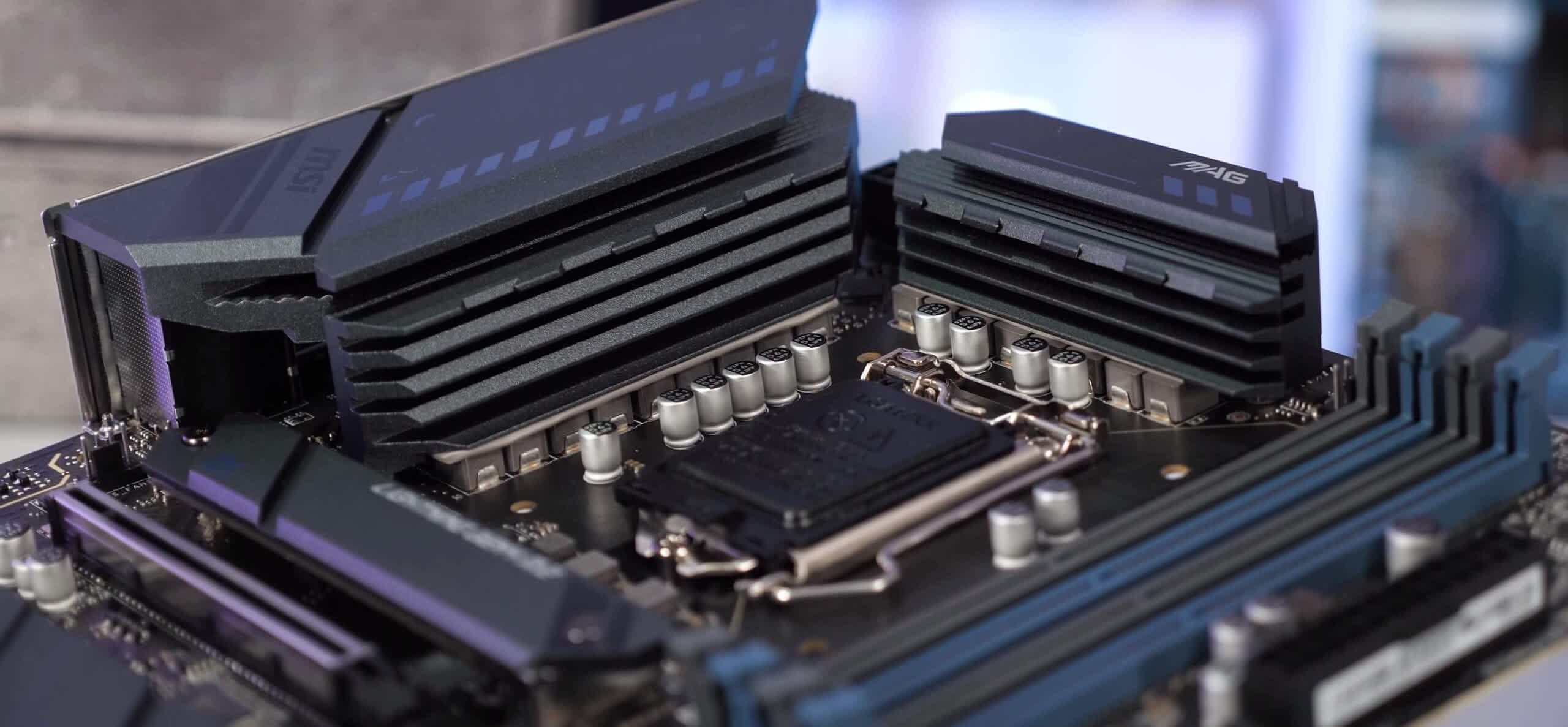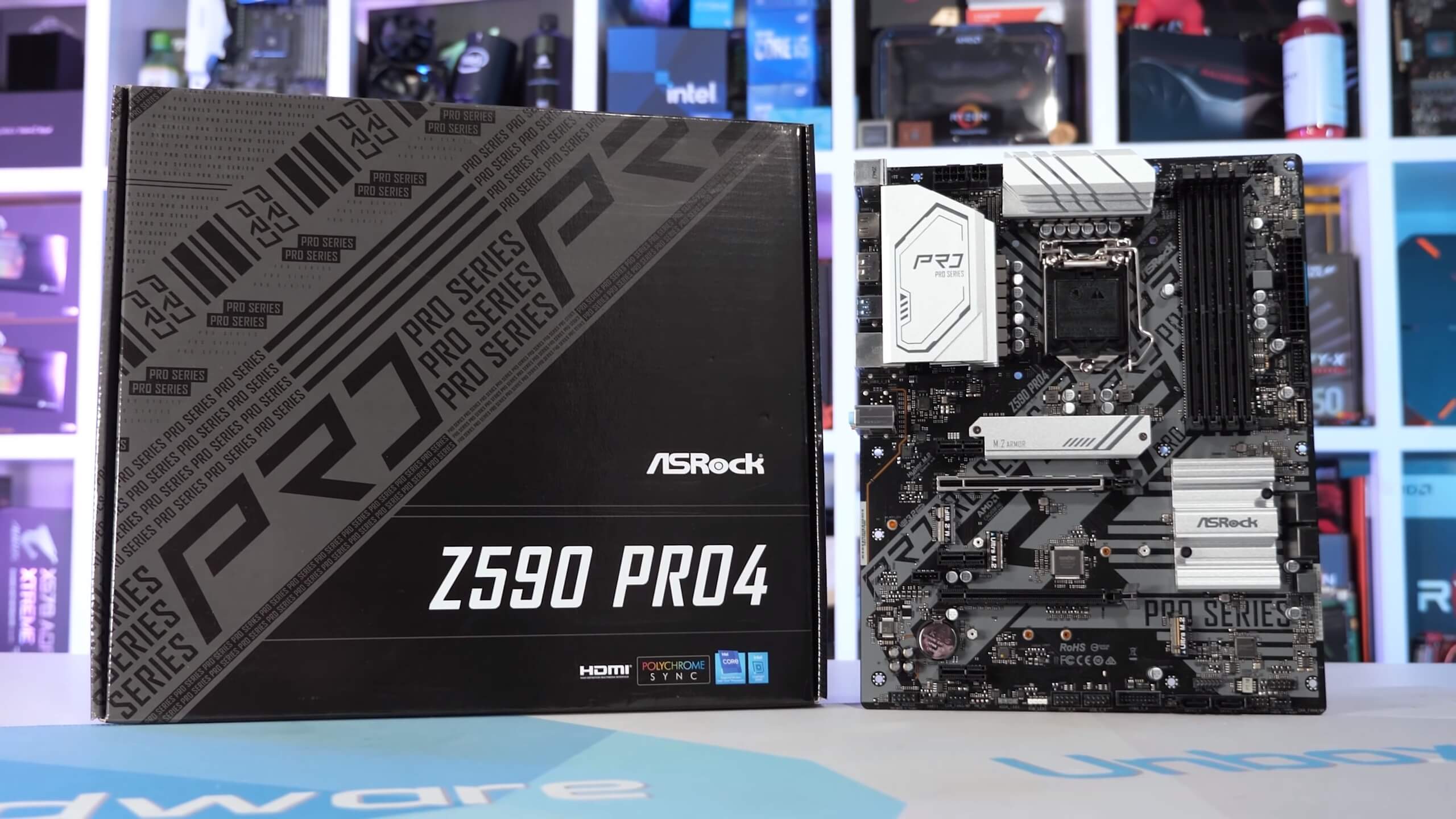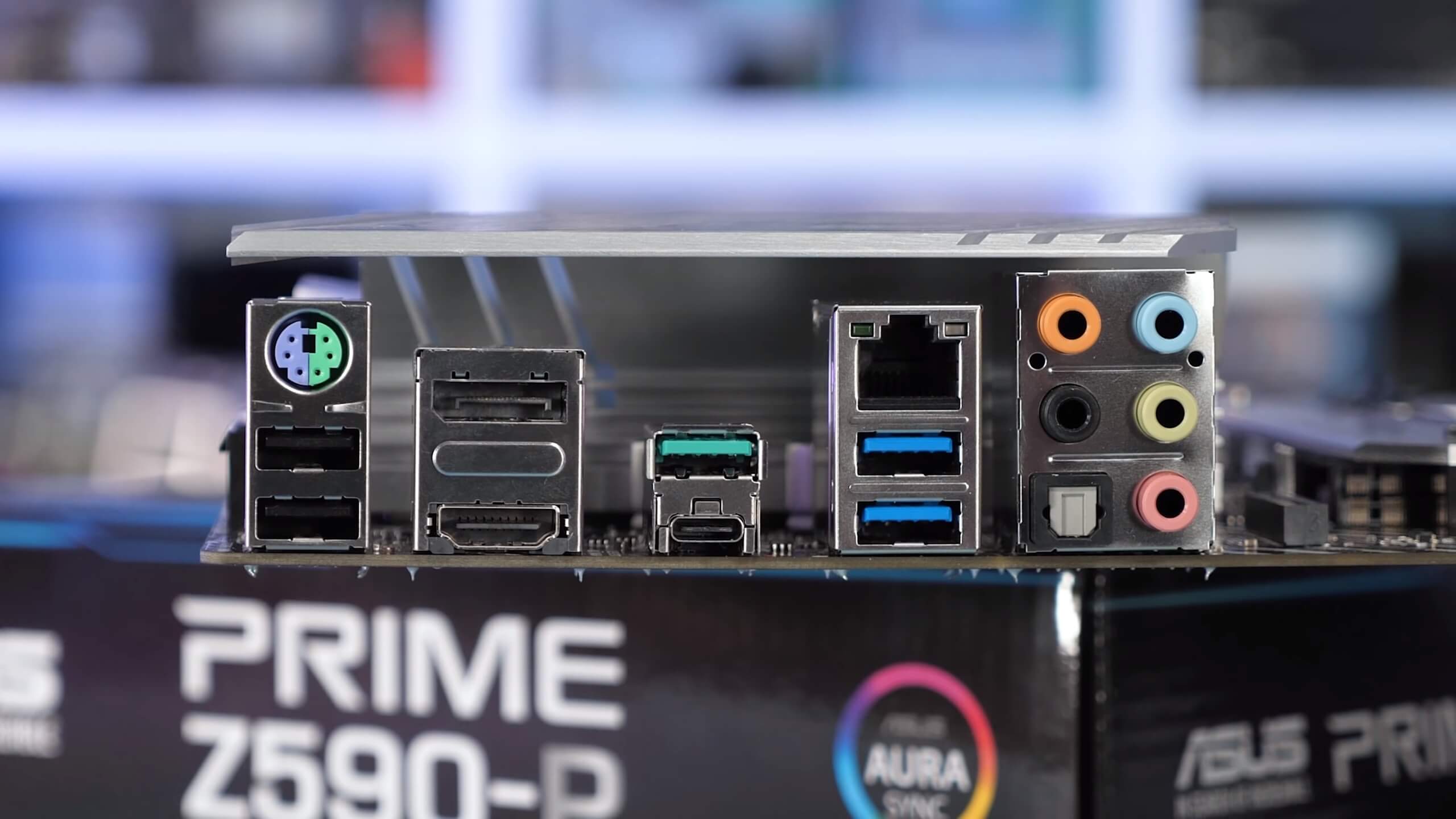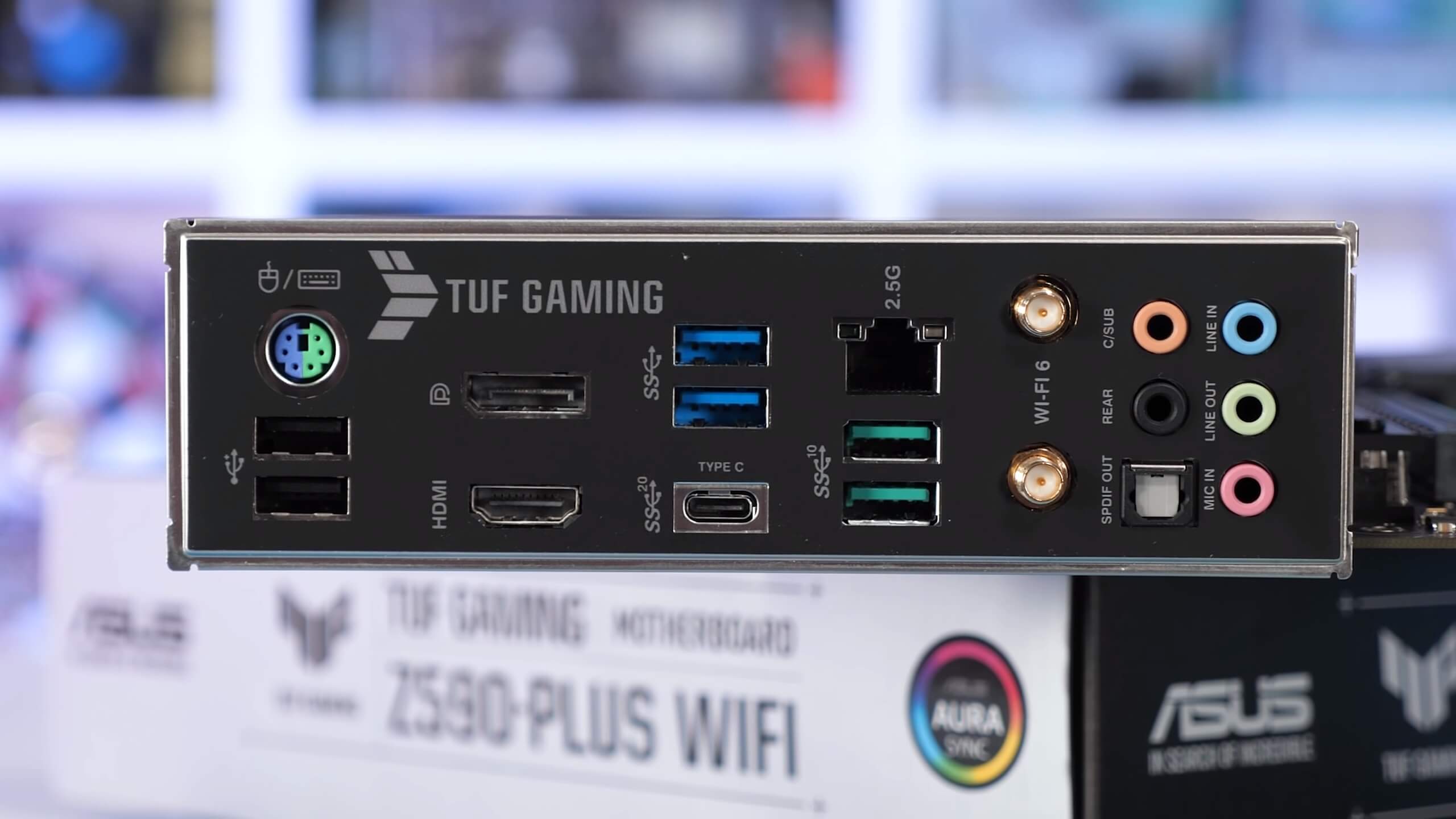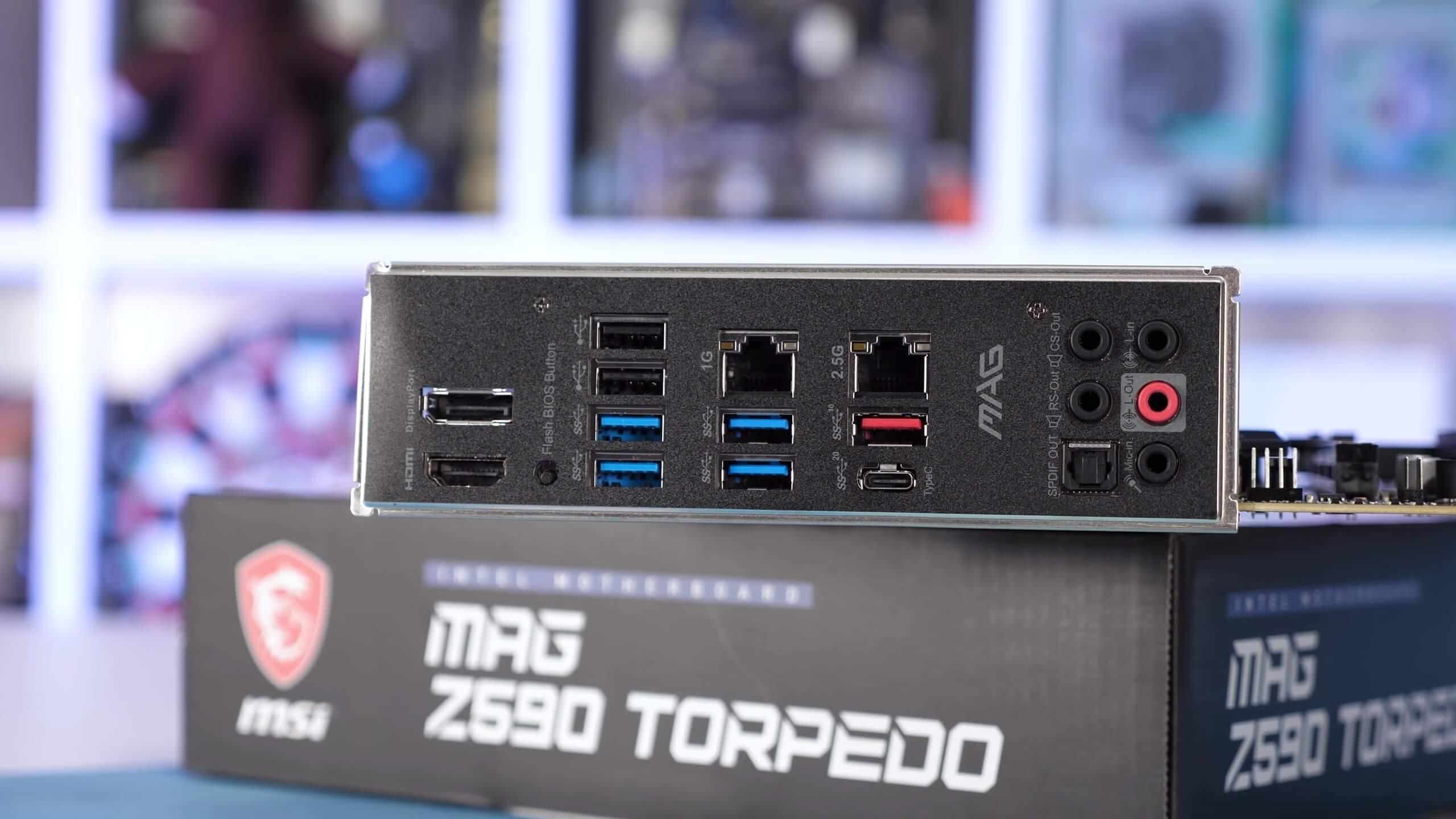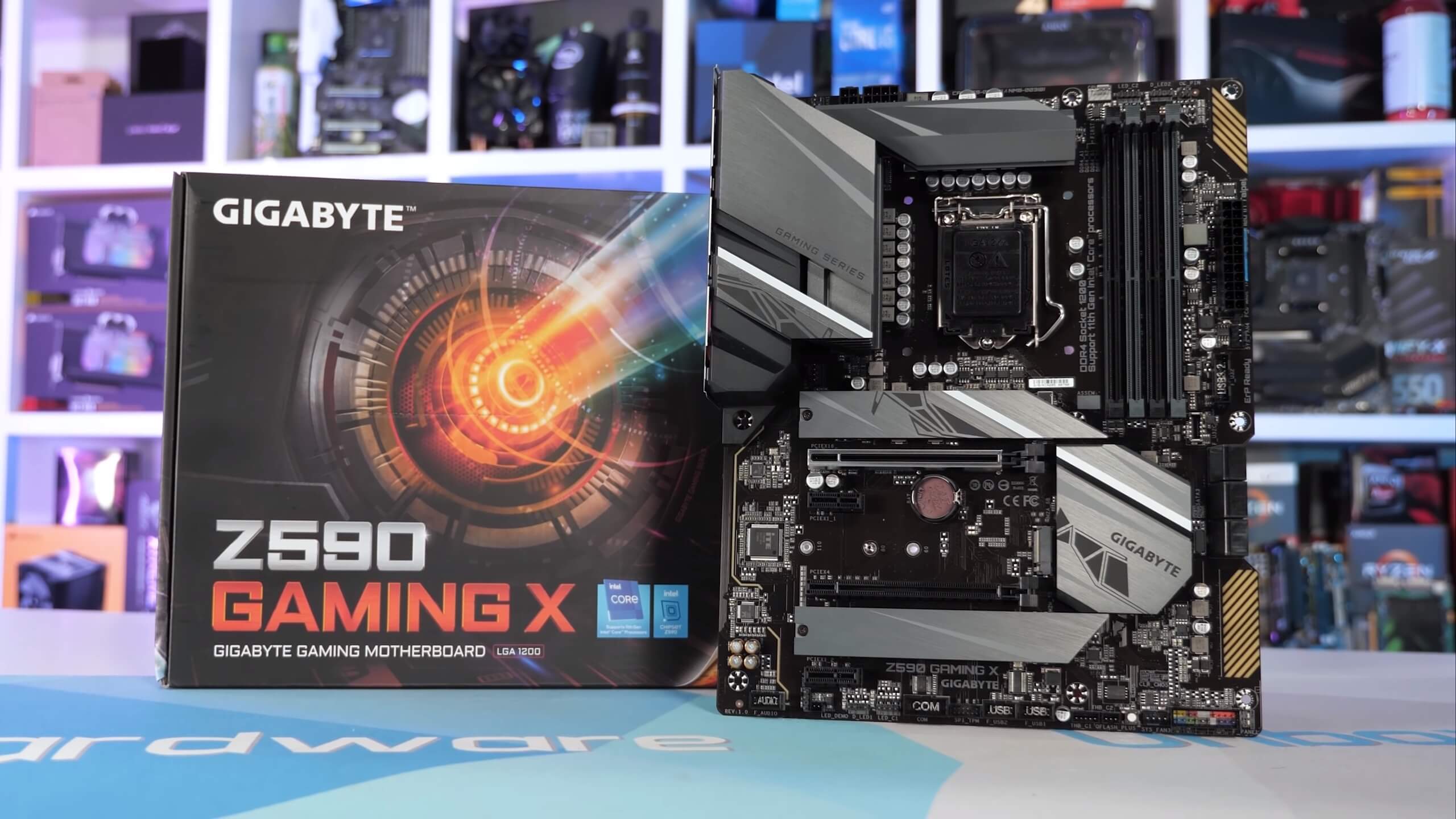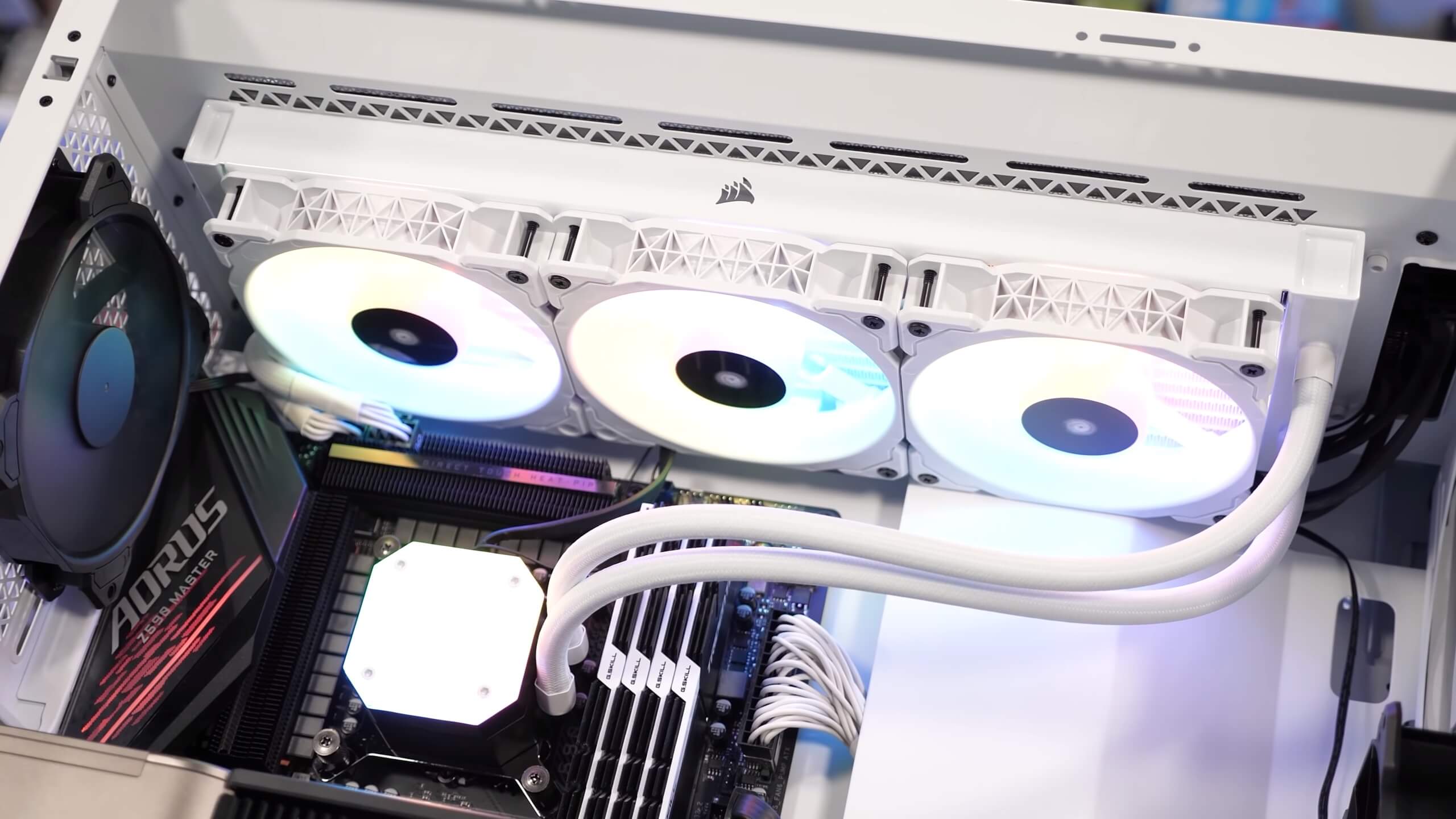Today we're taking a look at the VRM thermal performance of 8 entry-level Intel Z590 motherboards, which does not mean these are affordable for everyone, but they are considered budget-conscious Z590 motherboards with prices starting at $170. If you're spending Z590 money, you'll want to make sure you're getting a good one. As you're about to see, going beyond the spec-sheet and when it comes to VRM performance, there are a few models that certainly lag behind the pack.
Asrock Z590 Phantom Gaming 4
Starting with the most affordable board, the Asrock Z590 Phantom Gaming 4 comes in at $170. At least relative to other Z590 boards it is cheap, however even then I don't feel like you're getting much motherboard. I've seen better equipped I/O on an Intel NUC, so it's pretty horrible for an ATX motherboard. You get a handful of USB ports, three audio jacks, a PS/2 port and a HDMI output, that's it. But we're here for the VRM and I can tell you that's not much better, nor is the cooling.
Installed over the discrete Sino Power MOSFETs are two of the smallest VRM heatsinks you're likely to ever find featured on an ATX motherboard. Removing them reveals a 6-phase Vcore with each phase featuring two Sino Power SM4508 fets on the low-side and two SM4503 fets on the high-side, each feeding into a pair of inductors. So at least there's a dozen low & high side fets, but I'm still not expecting good things from this board.
Asrock Z590 Pro4
For an extra $15, the Z590 Pro4 looks slightly better, though oddly this board does away with the USB Type-C port on the I/O panel. The upgrades here include a DisplayPort output and perhaps more importantly a 2.5 Gigabit LAN port using the Realtek Dragon RTL8125BG controller, which admittedly I have no experience with.
In terms of board features, the Pro4 is a reasonable upgrade at $185. The biggest upgrade has been made to the VRM, and that's important for our testing. The board features a 6-core vcore VRM, but this one has been upgraded with 50A Vishay SiC654 powerstages, and we're getting two per phase, feeding into a pair of inductors.
Not only has Asrock upgraded the current handling capabilities but they're also strapped on some decent heatsinks which they're clamped down using screws rather than plastic clips and that drastically increases the mounting pressure. The Pro4 looks decent, but let's move on.
Asus Prime Z590-P
Looking at Asus boards now, we have their most affordable ATX model, the Prime Z590-P. At the time of writing, it's just $5 more than the Asrock Pro4 at $190. The I/O panel isn't particularly impressive though it is slightly better than the Pro4.
The cooling also appears more substantial with two fairly large heatsinks and the board itself is noticeably heavier. Under the heatsinks though we find a pretty mediocre vcore VRM, composed of Alpha & Omega AOZ5316 50A power stages. In total, there are ten which have been teamed up in pairs for a 5-phase vcore.
Had Asus included a 6th phase I feel like this board could be quite good at $190, but with just 10 power stages I'm not expecting it to perform that well, despite the large heatsinks.
Asus TUF Gaming Z590-Plus
The TUF Gaming takes a leap to $240, or $50 more than the Prime Z590-P. There's also a $260 version offering Wi-Fi support and that's actually the model we have in for testing. Because the VRM, cooling and the rest of the board remains the same, we'll quote pricing for the base model given we're not interested in the wireless support.
In terms of rear I/O, the TUF Gaming isn't much of an upgrade over the Prime Z590-P – without the Wi-Fi option it's essentially the same, though there are some upgrades to the existing features, the 2.5 Gbit LAN now uses an Intel controller rather than Realtek, for example.
However, it's the VRM that we're most interested in and here we find a significant upgrade. Asus is still using 50A powerstages but they're On Semi NCP302150's and there's 14 of them in total, configured in pairs for a 7-phase vcore. That's a significantly greater current capacity which should drastically improve VRM thermal performance for this model.
MSI Z590-A Pro
Next up we have the MSI Z590-A Pro and ever since canning the Z390 version of this board, MSI's made sure their most entry level model isn't an embarrassment. Priced at $190, it's priced to match other boards we have in for testing like the Asus Prime Z590-P, Asrock Z590 Pro4 and the Gigabyte Z590 UD.
In terms of features, the board is surprisingly good. Not only do you get Intel 2.5 Gbps LAN, but they've also included 8 USB ports on the I/O panel, half of which are USB 2.0, but still it's nice to see more than half a dozen ports on offer.
The Z590-A Pro comes equipped with an impressive VRM, too. The vcore portion features a dozen Alpha & Omega 55A power stages, these are higher rated and more efficient powerstages than what Asus used on the similarly priced Prime Z590-P, and there's two more of them. MSI has also included some rather large heatsinks, so this should be an entry-level Z590 board to be on the lookout for when we get to the thermal testing shortly.
MSI Z590 Torpedo
We find that MSI jumps quite a bit in price for the next best model, just like Asus. The MSI Z590 Torpedo comes in at $240, to match the Asus TUF Gaming Z590-Plus.
When compared to the TUF Gaming, the Torpedo offers an extra USB 3.2 port on the I/O panel, and a second LAN port, though it's just a 1 Gbit connection, but that's in addition to a 2.5 Gbit port driven by an Intel controller.
The Torpedo is a premium-looking board and it should be at this price point. Though I'm not sure how popular the blue heatsinks are going to be, it's nice seeing a motherboard with a bit of character. The blue heatsinks are huge indeed, and under them you'll find an impressive 7-phase vcore VRM. MSI has used two On Semi 60A power stages per phase meaning there are 14 for just the vcore portion of the board. With that, we expect this to be one of the best performers of the roundup.
Gigabyte Z590 UD
Gigabyte's most entry-level ATX Z590 motherboard is the Z590 UD which will set you back $190. When compared to the MSI Z590-A Pro, the I/O panel is similar, though it drops USB Type-C and a number of audio jacks, but the I/O shield is pre-installed.
The board looks decent, featuring the typical black and gray theme. The VRM heatsinks look decent though only the larger primary heatsink is fixed into place using screws for maximum mounting pressure.
Of course, it's what's under the heatsinks that's the most important thing and here we find a massive 12-phase vcore VRM, with each phase driven by a Vishay SiC651A 50A powerstage. In total, there are 12 powerstages, so while not the most extreme vcore VRM we've seen so far, it's still mighty impressive for the price.
Gigabyte Z590 Gaming X
Finally, we have the Gigabyte Z590 Gaming X, which for a mere $20 extra than the UD, you get what looks to be a much better motherboard ($210). The I/O panel has been upgraded to include a USB Type-C port along with 6 audio jacks and, of course, the I/O shield is still pre-installed.
The VRM heatsinks have also been upgraded and are bigger which is a bit ironic given the powerstages have been upgraded, making them more efficient, which means they'll output less heat, but that's how these things seem to go.
The Gaming X still uses a dozen Vishay powerstages in a 12-phase configuration, but we find 60A versions, so this board should be slightly better than the UD in terms of VRM thermal performance.
Test Setup
Before we get to the graphs, let's talk about the test conditions. For this testing and all future LGA1200 VRM thermal testing we've built a dedicated system inside the Corsair 5000D Airflow case. Powering it we have the Corsair RM850x PSU and the Corsair iCUE H150i Elite Capellix White keeping things cool.
The 5000D has been configured with a single rear 120mm exhaust fan and a single 120mm intake fan. On the top of the case is the H150i 360mm radiator with three 120mm exhaust fans. This is a standard configuration, air flow is good, and in a 21 degree room, we'd say this is an optimal setup.
For recording temperatures we're using a digital thermometer with K-Type thermocouples. We'll be reporting the peak rear PCB temperature. Finally, we're not reporting Delta T over Ambient, instead we maintain a room temperature of 21 degrees and to ensure a consistent ambient temperature, a thermocouple is positioned next to the test system.
For testing the motherboards we've got three configurations using two different 11th-gen Intel Core processors. The first test uses a stock Core i9-11900K as we're interested to see how each of these boards configures this processor. Then of course, we'll overclock the 11900K for a stress test, and for a more relaxed stress test we'll also be including the 11600K, both of which will be overclocked to 4.9 GHz using 1.35v.
For stressing the system we're using the Blender Gooseberry workload which will run for an hour, at which point we'll be reporting the maximum PCB temperature, recorded using k-type thermocouples.
Benchmarks
Here's a look at VRM thermal performance using a stock Intel Core i9-11900K processor and the first thing you'll want to note is that this isn't an apples to apples test. The sustained CPU all-core frequency can vary quite a bit, with the Asrock boards being by far the worst, though they are running within spec.
Basically Asrock has decided to limit their entry-level Z590 motherboards to the Intel base spec (125W TDP). They're the only manufacturer doing this with Asus, Gigabyte and MSI all running the 11900K at between 4.7 GHz and 4.8 GHz depending on the board model.

Normally Asrock doesn't power limit their boards and I believe this isn't the case for their more expensive models, though I've yet to test them. So has Asrock just decided to follow the Intel specifications, or are they lacking confidence in their design?
Out of interest, I removed the power limits using the Intel XTU software and that saw the 11900K boost up to an all-core frequency of roughly 4.8 GHz on the Phantom Gaming 4. The only issue being that this saw temperatures skyrocket to 101 degrees, a 28 degree increase over what the board did out of the box with the 125 watt TDP limits enforced.
So if you want the same uncapped out of the box experience that you'll receive on the Asus Prime Z590-P, Gigabyte Z590 UD or MSI Z590-A Pro with the Phantom Gaming, you'll have to be okay with dangerously high VRM temperatures.
Even the Asus Prime Z590-P wasn't particularly impressive hitting 78C, but at least the 11900K wasn't power limited here. Still, that almost 80C operating temperature looks quite bad next to the Gigabyte Z590 UD and MSI Z590-A Pro, both of which ran at around 60C, though they were running the 11900K 100 MHz slower. For a more apples to apples comparison, let's move on to the OC results.

With all motherboards overclocked to 4.9 GHz, power consumption for just the CPU increased to between 219 and 229 watts, depending on the model.
It's worth noting that none of these boards power throttled the 11900K after an hour of stress testing in Blender which is quite impressive, though for some reason the Asrock boards had trouble maintaining 4.9 GHz exactly, although they didn't throttle. Of course, the Phantom Gaming 4 operating temperature is less than ideal, hitting 112C on the rear side of the PCB, which is not the internal component temperature which is bound to be at least 10 degrees hotter.
The Asus Prime Z590-P, which wasn't exactly impressive, was considerably better than the Phantom Gaming 4, peaking at 96C. The Asrock Z590 Pro4 was cooler again at 86C and while that's an acceptable result, it's not great, especially relative to similarly priced Z590 boards from the likes of Gigabyte and MSI.
The Gigabyte Z590 UD peaked at just 74C, while the Gaming X version was only slightly better at 73C. The MSI Z590-A Pro peaked at 70C, while the Torpedo ran at just 68C. The best result came from the Asus TUF Gaming Z590-Plus which peaked at 67C.
To be fair, all boards that ran between 67C and 74C were excellent, and these results are near enough to call a tie. When it comes to VRM thermal performance, they're all much of a muchness and you'd purchase based on board features, design, price, and so on. But before we wrap up the testing, here's a look at how they fair with an overclocked 11600K.

For those of you who never intend on pairing your Z590 motherboard with an 11900K or don't plan on stressing the CPU for extended periods of time, this is how they got on with the Core i5-11600K. Basically all boards passed with relative ease, even the Phantom Gaming 4 peaked just shy of 80C. The rest of the pack ran at well under 70C, which is a very comfortable result, and you'd have no issue running these boards 24/7 with an overclocked 11600K.
What We Learned
That's how the most affordable Intel Z590 motherboards from top makers perform, and overall they are surprisingly good. The only awful board that you should avoid is the Asrock Z590 Phantom Gaming 4, and while I'd normally cut some slack to the cheapest offering, I feel this is something Asrock needs to stop doing.
We assume they're trying to capture buyers by offering the most affordable Z590 board out there, but they're ultimately taking advantage of their customers. The Phantom Gaming 4 should be at best a B560 board, not Z590. The idea of Z590 is to offer CPU overclocking for flagship parts, and running at well over 100C in a cool room using a well ventilated case is completely unacceptable.

Therefore, you're always going to be far better off coming up with the extra $20 to land the MSI Z590-A Pro or Gigabyte Z590 UD, even if you only plan on running a Core i5 part, they're simply much better quality boards.
The other issue I have with these Asrock boards is that they enforce the 125 watt TDP limit out of the box. I wonder, is this the case for all Asrock Z590 boards or just the most affordable models? I don't have the answer on that one yet, but I have purchased the more expensive models, so I'll be able to test those shortly.
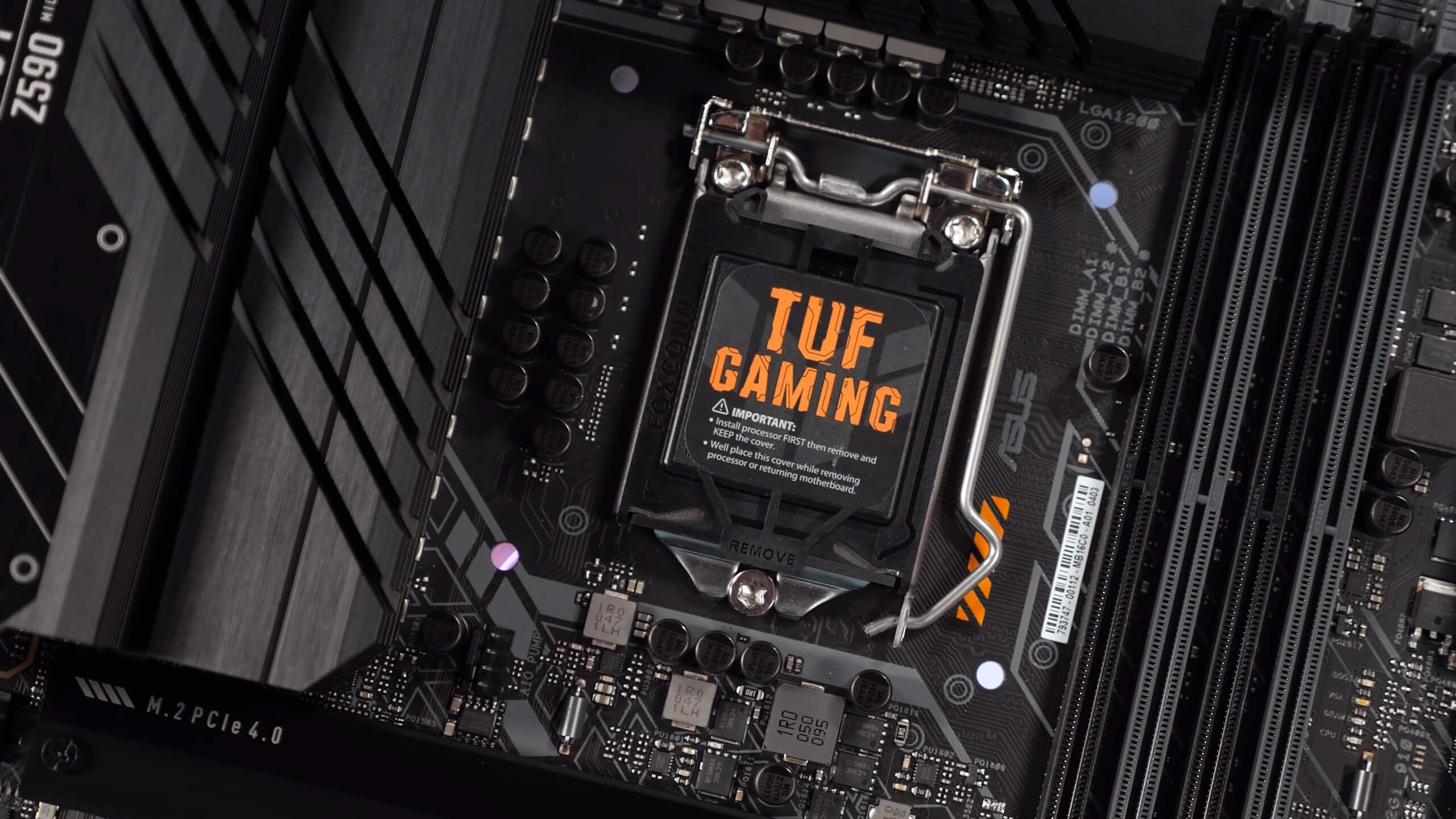
If Asrock has removed the power limits on their more expensive Z590 boards this creates an unfortunate scenario where you don't really know what kind of performance their Z590 boards offer out of the box, you could be looking at an all-core frequency of 4.3 GHz or 4.8 GHz, or anything in between.
Thankfully the Asrock Z590 Pro4 is a lot better, at least compared to the Phantom Gaming 4, but next to competing MSI and Gigabyte motherboards, it's a hard pass. In terms of value, the Gigabyte Z590 UD and MSI Z590-A Pro are hard to beat and I'd argue that they can't be beat. The Asus Prime Z590-P is underwhelming at $190 with its weak feature set and unimpressive VRM performance.

On the other hand, the Asus TUF Gaming Z590-Plus is excellent. It's also pricey at $240, though that seems to be the going price for a decent Z590 board. The MSI Z590 Torpedo was also very competitive at this price point, while the Gigabyte Z590 Gaming X is uncontested at $210.
Overall, if you're looking for an affordable yet high quality Z590 motherboard, I'd recommend the MSI Z590-A Pro and as a backup option the Gigabyte Z590 UD. If you've got a bit more money to spend and want a few extra features and a better quality VRM, the Asus TUF Gaming Z590-Plus or MSI Z590 Torpedo would be our go-to options.
